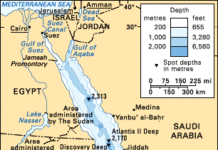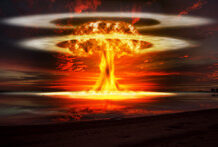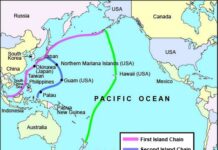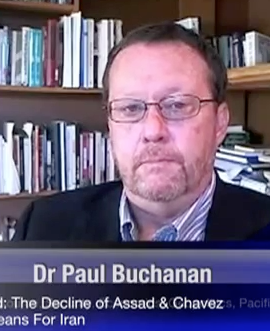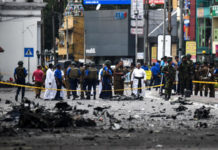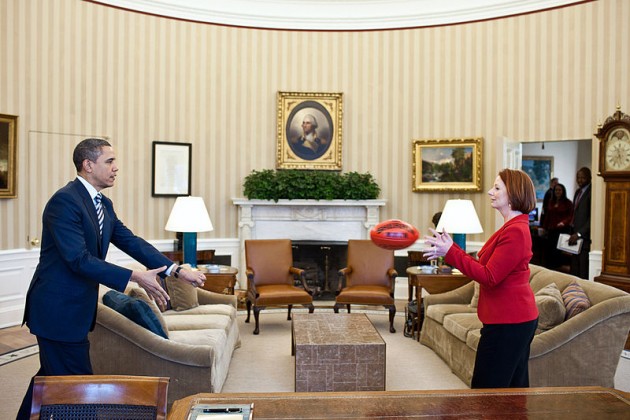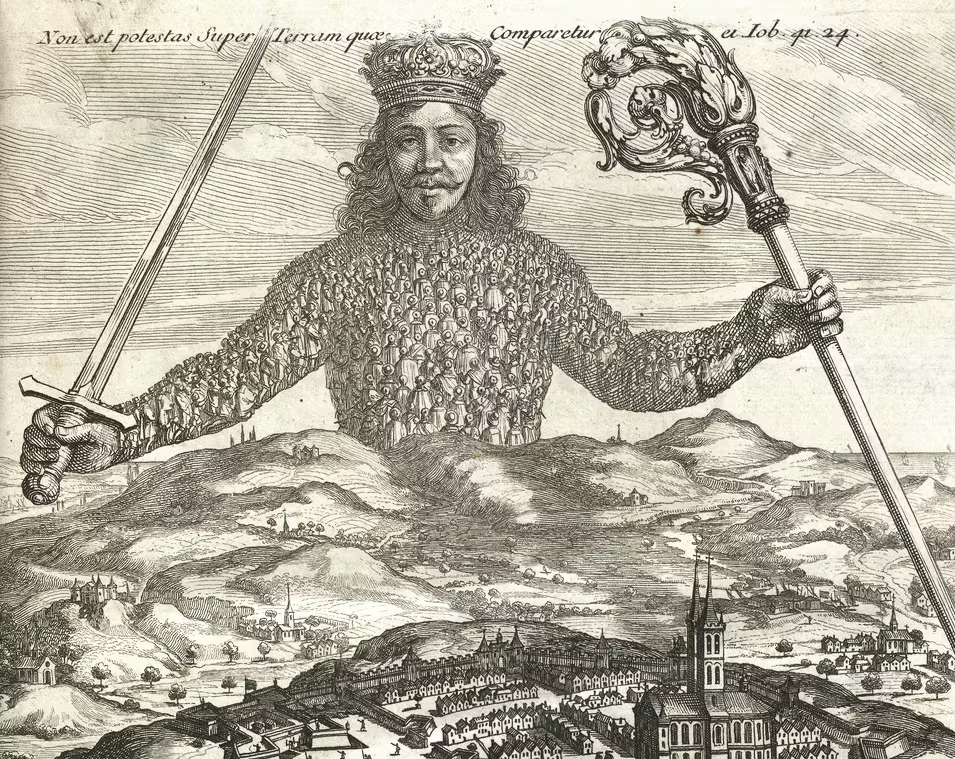Analysis: A different type of BRIC (Australia in comparative perspective).
In this installment of the 36th Parallel series of analytic briefs, the focus is on Australia compared to other rising middle powers, including three of the BRICs: Brazil, Russia, India.
Analysis – By Dr. Paul G. Buchanan.
 Although it may irk the okkers, Australia can be fairly compared with three of the four so-called BRICs: Brazil, Russia, India. The PRC is a step ahead of the rest in terms of relative global power, to the point that it is seen by policy-makers in most capitals as the main strategic rival of the US. The other three are seen as rising or resurgent regional powers expanding their spheres of influence. Although some define the BRICs by their climb out of underdevelopment, the truth is that none of these countries are emerging from real underdeveloped status. Prior to their exponential growth over the last decade or so, they were all relatively developed countries in terms of economic base and social complexity, at least in and around their major urban centers. If one takes a realistic look at Australia in terms of macroeconomic and social characteristics prior to the 1990s, it manifests a geographic divide similar to the others where relatively advanced levels of urban socio-economic development are counter-balanced by relative under-development in the countryside. Differences in culture and governance are what set these rising powers apart then and now, but the broader similarities remain as the basis for a small case sample comparison.
Although it may irk the okkers, Australia can be fairly compared with three of the four so-called BRICs: Brazil, Russia, India. The PRC is a step ahead of the rest in terms of relative global power, to the point that it is seen by policy-makers in most capitals as the main strategic rival of the US. The other three are seen as rising or resurgent regional powers expanding their spheres of influence. Although some define the BRICs by their climb out of underdevelopment, the truth is that none of these countries are emerging from real underdeveloped status. Prior to their exponential growth over the last decade or so, they were all relatively developed countries in terms of economic base and social complexity, at least in and around their major urban centers. If one takes a realistic look at Australia in terms of macroeconomic and social characteristics prior to the 1990s, it manifests a geographic divide similar to the others where relatively advanced levels of urban socio-economic development are counter-balanced by relative under-development in the countryside. Differences in culture and governance are what set these rising powers apart then and now, but the broader similarities remain as the basis for a small case sample comparison.Accepting this “most-similar” classification allows us to look for specific differences as well as similarities within the case sample.
Brazil and Russia are ruled by well entrenched post-authoritarian regimes that combine electoral politics with commodity exports as the basis for national growth. Nearly thirty years after the withdrawal of the military authoritarians, Brazil is an immature, but clearly maturing, political democracy. Twenty years after the collapse of the Soviet Union, Russia is a hardening electoral authoritarian regime. Both are using oil and gas exploitation as the motor force of the economy, although Brazil has outgrown Russia in terms of value-added manufacturing. In Russia the energy sector is controlled by indigenous interests, both public and private. In Brazil, as in Australia, the energy sector is driven by foreign investment, Chinese in particular. Both Brazil and Russia have strong service sectors, with Brazil having a larger tourism base while Russia is stronger in computing and other high-tech ventures. Both have well-developed financial and stock markets and relatively weak currencies
India combines a long-established parliamentary democracy with low-wage manufacturing and services as the basis for growth. Like Brazil and Russia, it is a federal republic, but its democratic (political, not social) history is longer and more continuous than Brazil’s. Both India and Brazil have large populations, although India’s is nearly five times larger than Brazil’s 250 million. Both have extensive poverty, although there have been great improvements in standards of living and human security indicators over the last two decades. Despite its growth, Russia exhibits oligarchical traits in the distribution of wealth and public services, with negative population growth and poverty expanding amongst an aging citizenry. It has largely re-built its military and remains a significant arms exporter, including to India and China. Although Brazil is one of the largest and most sophisticated of the Latin American militaries, it has the weakest armed forces of the BRICs (mainly due to the absence of regional conflict in South America and the internal defense focus of the military for years after the return to democracy). India is strategically moving in response to the PRCs military expansion while maintaining its position of strength relative to Pakistan (a Chinese ally). This has seen it direct resources towards upgrading its naval capabilities as well as modernizing its land and air forces in a measure disproportionate to the requirements of regional balancing. To a lesser extent Brazil has done the same, shifting its strategic priorities to maritime and air force projection while maintaining a dominant land-based component. On a power continuum the three countries now outweigh all but the major NATO powers in terms of international influence.
Australia combines a mature post-colonial parliamentary political system at both the national and state level with commodity exports (particularly minerals) in order to improve its strategic position in the world. It has a significant manufacturing base and service sector dominated by finance and tourism, a robust stock market and a strong–some argue over-valued– currency. Although it scores higher on human development indexes than the Brazil, India and Russia, it has pockets of deep poverty (particularly among its indigenous population), growing income inequalities and considerable ethnic and social tensions. Corruption is a problem in the provision of goods and services as well as in political life, albeit to a lesser extent than the other three countries (in which it is rife). Along with the inherent precariousness of its dependence on mineral exports for overall growth, concentrated wealth in the resource extractive sectors has skewed GDP and made most of the country, including its heavily populated Eastern seaboard, lag behind Western Australia in terms of employment opportunities and regional growth. This distorted economic picture, along with monopolization of media outlets, is a trait shared by Brazil and Russia and, with the attendant modifications made for its different structural foundations, for India as well (i.e. over-reliance on increasingly monopolized commodity and manufacturing exports and regional maldistribution of wealth are common to all four countries, albeit to different degrees).
What is most different about Australia when compared with Brazil, India and Russia is that it is:
- a) a much more egalitarian society;
- b) has a better track record of democratic governance and adherence to the rule of law;
- c) has higher average standards of living; and
- d) is a major US strategic ally (to the point that it is the most important US strategic partner in the Southern Hemisphere).
The last factor has seen a build-up of military capabilities that reinforces its expeditionary character in accord with its role as a key regional deputy in the Western security alliance structure. In fact, Australia is well on its way towards replacing Great Britain as the closest US security ally.
Because it is a first-tier US security partner, the Australian Defence Force (particularly its Army) is currently more battle-hardened than the BRIC militaries (the Russian military ended large scale foreign operations in Afghanistan and has concentrated its attention in the last decade on domestic insurgency throughout its southern periphery, which in its perspective includes Georgian encroachment on Ossetia). It has deployed combat troops to Iraq and Afghanistan, and contributes significant contingents of troops to multilateral peace enforcement missions in East Timor and the Solomon Islands as well as smaller numbers elsewhere. It shares US military technologies not available to other countries and hosts US troops on its soil (none of the BRICs have permanent US combat detachments located on their territory). It has strong bilateral military and intelligence ties to the US in a measure none of the BRICs do.
This allows it to play a vital role in the outer strategic “wall” that the US has erected in the Southwest Pacific as a hedge against Chinese naval expansion (the wall is an arc perimeter that extends from Honolulu to Mumbai via Australia (and increasingly New Zealand). It is complemented by an inner security perimeter that extends from Japan through Taiwan, South Korea, the Philippines, Malaysia, Thailand and Singapore, and which includes bilateral security agreements between the US and all of these countries as well as Brunei, Indonesia, and Vietnam. Designed to be flexible and reliant on a strong US forward presence in the Western Pacific, these security “walls” are the foundation of the strategic architecture that the US has built to “contain” China in the Pacific (the details of the new containment policy are outlined here). Australia is an essential part of this network.
The Australian military build up is remarkable given that when compared with the BRICs it has the most benign threat environment in which to operate. It has no land borders or immediate physical threats to the country itself. It has no significant armed domestic threats, certain jihadist endeavors notwithstanding. It has no real “enemies” other than those it has made by fighting alongside the US in the Middle East and Central Asia, and none of these have the ability to project significant force on Australia. Its military supremacy in the southwestern Pacific is unchallenged (concerns about Indonesian force projection against Australia are overblown given the domestic and defensive orientation of the Army-centered Indonesian military and its relatively small naval and air forces, to say nothing of its lack of logistical lift capability).
Given the long sea and air lines of supply and communication that bind Australia to its trade partners, and the fact that new naval powers and a host of private maritime agents have begun to explore the Southwestern Pacific basin at a time when the US naval reach, although unparalleled, cannot be everywhere at once, it has justifiable reason to upgrade the military assets dedicated to independently safeguarding those lifeline channels. This has been seen in the prioritization of naval upgrades across a spectrum of assets and platforms as well as in maritime air cover. Although public attention tends to focus on the role of the navy in illegal fishery and people-smuggling operations, the bulk of Australia’s maritime orientation is on safeguarding transit off-shore on the adjacent high seas in the Indian and South Pacific Oceans rather than in coastal or in-shore waters.
 Australia’s disproportionate military capability (at 1.9 percent of 2012 GDP) also provides a strong deterrent against organized threats, be they indigenous or external in origin, across the “arc of instability” that stretches from East Timor to the borders of French Polynesia. This makes the ADF the southwestern Pacific’s regional constabulary force and the default option for most Pacific Island countries confronted with unmanageable civil unrest (the exception is Fiji, which maintains its own robust defense and which is at odds with Australia on a number of policy issues, to include the development of an armed Melanesian rapid response force). What is different is that Australia is developing force projection capabilities that exceed the requirements of regional policing and peace enforcement, which when taken in concert with its US military alliance gives it global force projection potential.
Australia’s disproportionate military capability (at 1.9 percent of 2012 GDP) also provides a strong deterrent against organized threats, be they indigenous or external in origin, across the “arc of instability” that stretches from East Timor to the borders of French Polynesia. This makes the ADF the southwestern Pacific’s regional constabulary force and the default option for most Pacific Island countries confronted with unmanageable civil unrest (the exception is Fiji, which maintains its own robust defense and which is at odds with Australia on a number of policy issues, to include the development of an armed Melanesian rapid response force). What is different is that Australia is developing force projection capabilities that exceed the requirements of regional policing and peace enforcement, which when taken in concert with its US military alliance gives it global force projection potential.
One of the paradoxes of Australia as it rises to become a regional great power is that it does so in spite rather than because of the actions of its political elite. The fractious and dysfunctional nature of Australian party politics is well known and only mitigated in part by the commonwealth nature of the political system. Party and factional infighting, undue interest group influence, corruption, scandal and malfeasance of various sorts have marked national politics for decades, with the current period being no exception. Many politicians are thrust into ministerial roles that exceed their levels of expertise, and constant intrigue and turmoil conspire against policy consistency amongst the political elite. State politics are often no better, but the checks and balances of commonwealth politics and a strong and independent court system insulates both sides from the excesses of the other. In spite of the flaws in its party system, Australia has gradually begun to emerge from the shadows of provincialism and into the global spotlight as more than a “sporting nation.” In fact, on an economic, military and diplomatic level, Australia is on a par with Brazil, India and Russia, but with far less of a population and far better credentials when it comes to governance even when taking into account the disfunctionalities within (not necessarily of) its political system. Its emergence as a middle power has been evident, among other endeavors, in Australia’s unusually strong interest in securing a seat on the UN Security Council this decade (which among other things contravened an informal agreement with Canada and New Zealand to chronologically stagger their bids for the two year temporary UNSC seats).
The explanation for Australia’s success appears to lie with its institutional robustness. In this context institutional robustness is defined as the ability of government bureaucracies to maintain professional standards and implement policy as required by law or government writ without undue interference from or institutional capture by external actors, to include political parties and interest groups (institutional “capture” is a phenomenon whereby policy-making branches or agencies are colonized or dominated by the logics of specific social groups with a vested interest in the nature and direction of policy emanating from those agencies. It includes but is not limited to rent-seeking behavior on the part of such groups).
Institutional robustness involves advanced levels of organizational autonomy and development, to include a very competent and professional national bureaucracy that is relatively insulated from the cut and thrust of everyday politics. In the Australian case,that can be added to a highly regarded academic community with considerable public policy expertise that has developed synergistic ties with the policy community (seen among other things in the interchange between numerous research institutes and the public sector).
This is particularly the case in the areas of foreign affairs and defense, around which there is a considerable degree of consensus amongst the political elite as all as senior public servants and academics that has allowed for the development of a distinctive Australian strategic culture. This allows Australia to exhibit considerable continuity and consistency in its approach to international affairs in spite of the fractious nature of party politics. The relative insulation of the public bureaucracy from the vicissitudes of political competition also ensures that Australia diplomatically presents itself in the best light, and its close and overt association with the US makes issues of foreign and security policy relatively simple to address and implement (although increasingly problematic in terms of distinguishing Australian strategic interests from those of the US). There is a saying that in strong countries it is not so much the character of the political leader that matters but the nature of the institutional machine that drives the course of the nation-state. This is clearly the case for Australia.
Even so, political instability in the form of internecine party politics poses a possible obstacle to Australia’s emergence as a middle power. Constant factional infighting and political opportunism have the potential to spill over into national policy-making and undermine the “Advance Australia” ethos that lies at the core of the national psyche. In the measure that the top echelons of the public bureaucracy are politicized as a result, then Australia’s reliability and reputation as an international actor may come under threat, which in turn will impede its ascent, as a nation-state, to greatness in the international realm.
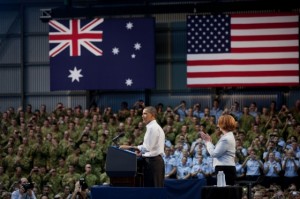 The relationship with the US is already well-established and intimate. That poses a problem for Australia, which needs to be seen as an independent operator if is to be considered a legitimate middle power. Too much identification with the US can lead to it being perceived as a surrogate, proxy or instrument of the US, with all of the negative baggage that entails. Thus Australia has to exhibit some degree of foreign policy independence vis a vis the US in order to achieve its full potential. Where it chooses to do so is a matter of conjecture (climate change may be a start), but in any event it will require that it balance its pro-US security orientation with an economic and diplomatic approach to the PRC that is neither confrontational nor obsequious, and which bridges the strategic gap between its growing international security commitments and its increasing economic orientation towards the PRC and the rest of Asia. In the measure that it can achieve that balance, its reputation for independence will be enhanced and its rise to great power status advanced.
The relationship with the US is already well-established and intimate. That poses a problem for Australia, which needs to be seen as an independent operator if is to be considered a legitimate middle power. Too much identification with the US can lead to it being perceived as a surrogate, proxy or instrument of the US, with all of the negative baggage that entails. Thus Australia has to exhibit some degree of foreign policy independence vis a vis the US in order to achieve its full potential. Where it chooses to do so is a matter of conjecture (climate change may be a start), but in any event it will require that it balance its pro-US security orientation with an economic and diplomatic approach to the PRC that is neither confrontational nor obsequious, and which bridges the strategic gap between its growing international security commitments and its increasing economic orientation towards the PRC and the rest of Asia. In the measure that it can achieve that balance, its reputation for independence will be enhanced and its rise to great power status advanced.- Defence.gov.au whitepaper
- FPIF.org – Australia remilitarizes
- SMH.com.au – Govt launches new defence white paper
- Defence.gov.au – ADF posture review
- Aspi.org.au
- Australia.gov.au – Defence and international defence policy
- Australianpolitics.com – foreign
- Dfat.gov.au – historical
- Foreignminister.gov.au – speeches
- Australianreview.net – phillips
- IPS.cap.anu.edu.au – Keynotes (pdf)
- Eastasiaforum.org/ – A time for change the US alliance and Australian foreign policy
- Pnyxblog.com – Australia’s unthinking security council quest



